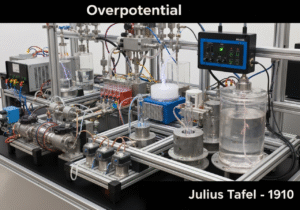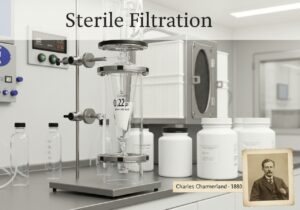Erbringung des dokumentierten Nachweises, dass die Geräte und Prozesse korrekt installiert sind, wie vorgesehen funktionieren und gleichbleibende, qualitativ hochwertige Ergebnisse entsprechend den vorgegebenen Spezifikationen liefern.
- Methodologien: Kunden & Marketing, Wirtschaft
IQ OQ PQ

IQ OQ PQ
- aktuelle Gute Herstellungspraxis (cGMP), Prozessverbesserung, Qualitätssicherung, Qualitätskontrolle, Qualitätsmanagement, Qualitätsmanagementsystem (QMS), Risikomanagement, Validierung, Überprüfung
Zielsetzung:
Wie es verwendet wird:
- IQ (Installation Qualification): Verifies that the equipment is installed correctly as per manufacturer's specifications and design requirements. OQ (Operational Qualification): Tests the equipment to ensure it operates within specified limits across its operating range. PQ (Performance/Process Qualification): Verifies that the equipment, when used with the actual manufacturing process, consistently produces product meeting all predetermined requirements under normal operating conditions.
Vorteile
- Ensures regulatory compliance (especially in pharma/medical devices), systematic Validierung, reduces risks of equipment failure, ensures consistent product quality, provides thorough documentation.
Nachteile
- Kann zeitaufwändig und ressourcenintensiv sein, erfordert detaillierte Planung und Durchführung, die Dokumentation kann umfangreich sein, kann als übermäßig bürokratisch empfunden werden, wenn sie nicht gut verwaltet wird.
Kategorien:
- Maschinenbau, Herstellung, Qualität, Risikomanagement
Am besten geeignet für:
- Validierung von Geräten und Prozessen in regulierten Branchen wie der Pharmaindustrie, der Medizintechnik und der Biotechnologie, um gleichbleibende Qualität und Konformität zu gewährleisten.
The IQ OQ PQ methodology is pivotal in industries such as pharmaceuticals, biotechnology, and medical devices, where precision and compliance with stringent regulations are mandatory. In the installation qualification (IQ) phase, a thorough assessment is conducted to confirm that the equipment is installed according to the manufacturer’s specifications and meets all necessary design requirements, incorporating aspects like environmental conditions and utility connections that could impact performance. The operational qualification (OQ) phase deploys specific tests to confirm that the equipment functions within pre-defined operational limits and can perform under various conditions, enabling teams to document and manage any variability in operation design. Following these validation steps, the performance qualification (PQ) phase involves executing processes using the actual manufacturing environment, ensuring that the equipment produces products that meet quality specifications consistently. Teams typically include quality assurance personnel, manufacturing engineers, validation specialists, and often regulatory affairs experts, providing a multi-disciplinary approach to validation that enhances reliability. This methodology is prominently applied during the Lebenszyklus of equipment, particularly during new system installations, major upgrades, or before the launch of production lines, ensuring that any new equipment not only fulfills operational demands but also adheres firmly to compliance standards set by regulatory bodies such as the FDA or EMA. Extensive documentation generated throughout the IQ OQ PQ process serves not only as proof of compliance but also as a critical reference for future audits and operational assessments, allowing companies to mitigate risks related to equipment failure and variability in product output while cultivating a reputation for quality and trustworthiness in the market.
Die wichtigsten Schritte dieser Methodik
- Verify that installation meets design specifications and manufacturer guidelines.
- Check connections, power supply, and hardware configurations.
- Ensure safety features and alarms are operational.
- Conduct functional tests to evaluate operational capability across the intended operating range.
- Document all tests and outcomes to demonstrate compliance with operational standards.
- Run tests with actual product conditions to confirm consistent performance under normal operations.
- Validate that the output meets design specifications for quality and integrity.
- Document performance results and confirm adherence to quality requirements.
Profi-Tipps
- Involve cross-functional teams during the IQ, OQ, and PQ phases to identify potential issues early and ensure all design and operational specifications are met.
- Implement risk management strategies, such as Failure Mode and Effects Analysis (FMEA), to prioritize validation activities based on potential impact on product quality and compliance.
- Utilize Statistische Prozesskontrolle (SPC) during PQ to monitor process stability and product consistency under normal operating conditions, ensuring ongoing compliance and quality assurance.
Verschiedene Methoden lesen und vergleichen, Wir empfehlen die
> Umfassendes Methoden-Repository <
zusammen mit den über 400 anderen Methoden.
Ihre Kommentare zu dieser Methodik oder zusätzliche Informationen sind willkommen auf der Kommentarbereich unten ↓ , sowie alle ingenieursbezogenen Ideen oder Links.
Historischer Kontext
1800-05-02
1880
1910
1940
1950
1970
1983
1834-01-01
1880
1920
1940
1950
1975
1997
(wenn das Datum nicht bekannt oder nicht relevant ist, z. B. "Strömungsmechanik", wird eine gerundete Schätzung des bemerkenswerten Erscheinens angegeben)














Verwandte Artikel
Fragebögen zu muskuloskelettalen Beschwerden
Multivariate Tests (MVT)
Mehrfache Regressionsanalyse
Motion-Capture-Systeme
MoSCoW-Methode
Moods Median-Test